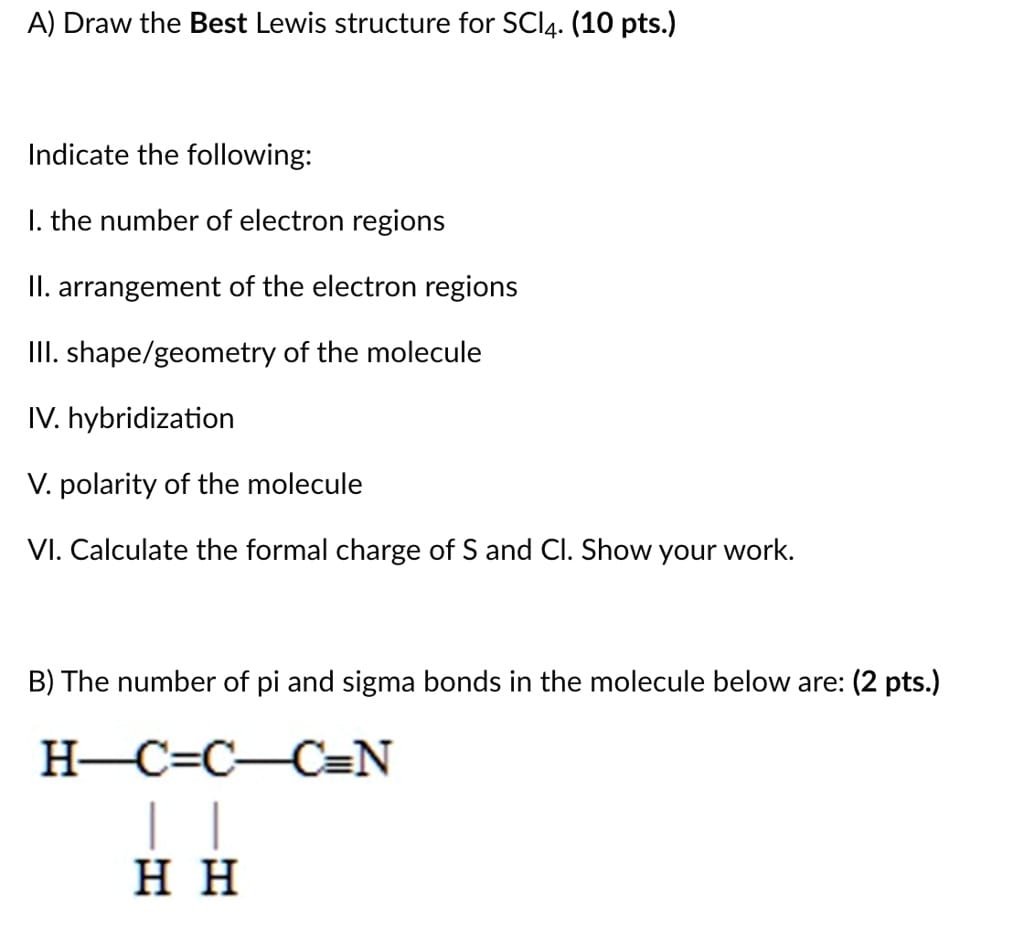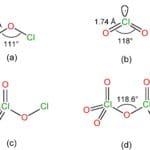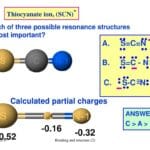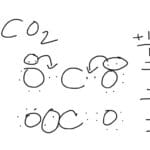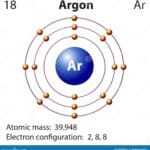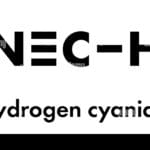Understanding molecular structures is fundamental to chemistry. It allows us to predict a molecule’s shape, polarity, and reactivity. In this comprehensive guide, we’ll delve into the SCl4 Lewis structure—a molecule that challenges the conventional octet rule. By understanding how to draw its Lewis structure, we can unlock the secrets behind its unique geometry and chemical behavior.
Basics of Lewis Structures: A Quick Refresher
Lewis structures, aptly named after the American chemist Gilbert N. Lewis, offer a visual representation of how valence electrons—those residing in the outermost shell of an atom—participate in bonding. They serve as a roadmap, guiding us in predicting how atoms combine to form molecules.
The Octet Rule: A Guiding Principle (with Exceptions!)
The octet rule, a cornerstone in chemical bonding, states that atoms tend to gain, lose, or share electrons to achieve a stable configuration with eight valence electrons. This rule, while widely applicable, has its exceptions, with sulfur being a notable example, as we’ll explore with SCl4.
Drawing the SCl4 Lewis Structure: A Step-by-Step Guide
Let’s break down the process of drawing the SCl4 Lewis structure into manageable steps:
1. Valence Electron Count: Begin by determining the total number of valence electrons contributed by each atom in the molecule.
- Sulfur (S) brings 6 valence electrons to the table.
- Each Chlorine (Cl) atom contributes 7 valence electrons.
- With four Chlorine atoms, the total valence electron count is 6 + (4 x 7) = 34.
2. Identifying the Central Atom: The least electronegative atom typically occupies the central position in a Lewis structure. In SCl4, Sulfur (S) is less electronegative than Chlorine (Cl), making it the central atom.
3. Single Bonds First: Connect the central Sulfur atom to each of the four Chlorine atoms with single bonds. Each single bond utilizes two valence electrons, bringing the total used to 8 (4 bonds x 2 electrons/bond).
4. Distributing the Remaining Electrons: We had 34 valence electrons initially, and we’ve used 8, leaving us with 26. These electrons are then distributed as lone pairs – pairs of electrons not involved in bonding.
- Each Chlorine atom prefers to have 8 electrons surrounding it (following the octet rule). Therefore, each Chlorine receives 3 lone pairs, using up 24 electrons (4 Cl atoms x 6 electrons).
- The remaining 2 electrons are placed as a lone pair on the central Sulfur atom.
5. Visual Representation:
[Image of SCl4 Lewis Structure: Sulfur in the center with four single bonds to Chlorine atoms. Each Chlorine has three lone pairs, and Sulfur has one lone pair.]
SCl4: Beyond the Lewis Structure
The Lewis structure provides a foundation for understanding the properties of SCl4.
Formal Charges: Verifying Stability
Formal charges help us assess the distribution of electrons within a molecule. They indicate whether electrons are shared equally or if one atom might bear a greater electron density. Calculating formal charges involves a simple formula:
Formal Charge = Valence Electrons – Non-bonding Electrons – 1/2 Bonding Electrons
In SCl4, all atoms have a formal charge of zero, indicating a stable electron distribution.
Hybridization: Sulfur’s Expanded Octet
In SCl4, Sulfur breaks the octet rule by accommodating 10 electrons instead of the typical 8. This phenomenon is possible due to hybridization, a concept where atomic orbitals mix to form new hybrid orbitals suitable for bonding. In this case, Sulfur undergoes sp3d hybridization, allowing it to form five bonds (four sigma bonds with Chlorine and accommodating one lone pair).
Molecular Geometry: Why SCl4 Is Not Trigonal Planar
Based on the number of electron pairs around Sulfur (five, including the lone pair), we might expect a trigonal bipyramidal geometry. However, the presence of a lone pair on Sulfur introduces repulsion. Since lone pairs occupy more space than bonding pairs, they “push” the Chlorine atoms closer together. This results in a distorted tetrahedral geometry, often described as a “see-saw” shape.
[Image of SCl4’s see-saw molecular geometry]
Polarity: The Influence of Molecular Shape
While the individual S-Cl bonds are polar due to the difference in electronegativity between Sulfur and Chlorine, the overall SCl4 molecule is considered nonpolar. This is because the see-saw geometry leads to a symmetrical arrangement of the Chlorine atoms, canceling out the individual bond dipoles.
Reactivity: The Role of the Lone Pair
The lone pair of electrons on Sulfur significantly influences the reactivity of SCl4. It makes Sulfur electron-rich, allowing it to act as a Lewis acid—a species that can accept an electron pair. This property makes SCl4 reactive, particularly in hydrolysis reactions with water.
Conclusion
The SCl4 Lewis structure provides valuable insights into the molecule’s properties and behavior. By understanding the concepts of formal charge, hybridization, molecular geometry, and polarity, we gain a deeper appreciation for the intricacies of chemical bonding. The example of SCl4 reminds us that the rules of chemistry, while guiding, are not always absolute. Exceptions like the expanded octet of Sulfur encourage us to delve deeper and explore the fascinating world of molecular structures.
- Crypto Quotes’ Red Flags: Avoid Costly Mistakes - June 30, 2025
- Unlock Inspirational Crypto Quotes: Future Predictions - June 30, 2025
- Famous Bitcoin Quotes: A Deep Dive into Crypto’s History - June 30, 2025
